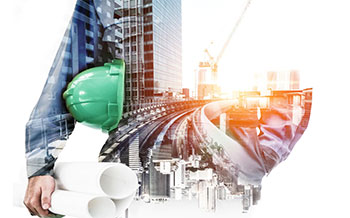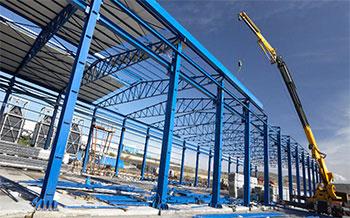
CONVENTIONAL COMMERCIAL BUILDING CONTRACTORS

Conventional Commercial Building Contractors
In the fast-paced world of construction, classic commercial building contractors are the pillars of traditional virtuosity, bringing the newest methods and skilled craftsmanship to the spearhead of commercial development. These contractors are crucial in forming the physical environment of our cities since they create and construct buildings that are not only long-lasting but also perfectly balanced between maintainable, aesthetics, and profitability.
Fundamentally, Conventional Commercial Building Contractors follow entrenched construction standards and procedures, depend on a wealth of experience and tried-and-true methods. Their skill is in combining individuality with tried-and-true methodology to create a perfect blend of modern design and sound construction in every project they work on.
Fundamental to their business, Conventional Commercial Building Contractors follow accepted building excellence and procedures, utilizing a wealth of experience and tried-and-true methods. They are experts at fusing originality with tried-and-true capacity so that every project they work on is a well-balanced combination of inventive design and sound construction.
These builders technical in building a wide range of commercial buildings, such as office buildings, shopping centres, colleges, and more. Their expanded skill set includes strict quality control, budget obedience, and project management—all critical for meeting and consummate customer expectations in project delivery.
Conventional Commercial Building Contractors are at the beginning of the construction industry's evolution, recognize the wisdom ingrained in conventional construction while embody change and utilizing defendable practices and specialized breakthroughs.
We will discover the ageless ideas and modern updates that indicate these industry titans as we thread through the complex web of commercial construction.
Commercial building design
The design of commercial buildings is a living example of how innovation, feasibility, and exquisite excellence come together to create a dynamic collage of urban development. Businesses' goals, industry's practical needs, and architects' creative vision are all interlaced in the energetic discipline of commercial building design, which goes ahead simple brick and mortar constructions. The design of commercial buildings is interpreted by this complex dance between form and function, where each line, space, and material distinction creates a thorough environment that fulfills significant and utilitarian functions.
Creating surroundings that prompt creativity, increase productivity, and make an collision is what commercial building design is all about. It's not only about designing physical places. Every design, from grand marketable headquarters to small-scale retail corporation, tells a story about the brand, meets a range of needs, and accommodate to the beat of urban life.
The dynamic field of commercial building design is scrutinize in this essay, along with the guiding principles that supremacy it, the cutting edge trends that are amendment the industry, and the mutually emphasize relationship between architectural vision and the functionality that today's fast changing business environment demands. The creativity and engineering that support the construction of commercial structures that serve as both practical buildings and noticeable monuments are revealed as we concert the intricacy of designing spaces that sync with the beat of commerce.
Types of commercial building
The terrain of commercial architecture is as assorted as the multitude of businesses it houses, resulting in an astonishing variety of commercial building styles that address a range of business necessity. Every type is a distinct delegation of its intended use, efficiently combining design, benefit, and industry-specific specifications. The world of commercial buildings includes a diverse range of structures, each with unique qualities and delicacy, from the magnificent skyscrapers that define city skylines to the modest stores that line urban streets.
This essay takes the reader on a tour of the many kinds of commercial structures, from massive malls that are revolutionizing the retail experience to cutting-edge office buildings that are defining the modern workplace. We examine the architectural details that set each category apart as well as the purpose-driven design that guided their creation as we dig further into each one. The taxonomy of commercial buildings, which range from entertainment complexes to healthcare facilities, hotels to warehouses, reflects the constantly shifting needs of many businesses and the dynamic character of urban life.
As we explore the diverse field of commercial architecture, we will uncover the special qualities and tactical factors that distinguish various commercial building types. Join us on this journey through time. During this trip, we learn how important these buildings are in forming the urban fabric and making it easier for businesses to open and operate right in the middle of our neighborhoods.
Top commercial builders
Elite commercial builders bear a great deal of responsibility for the outcome and influence of commercial projects in the fast-paced world of construction. As landscape architects, these industry titans plan and coordinate the construction of ambitious buildings that define cityscapes and enhance the functionality of busy city centers. The title of "top commercial builders" encompasses more than just construction expertise; it also represents a comprehensive grasp of project management, creativity, and an unshakable dedication to quality.
These builders, who are frequently at the forefront of sustainable practices and technical breakthroughs, have a track record of completing famous projects in a variety of industries.
The best commercial builders are examined in this essay, along with the essential characteristics that make them unique. We aim to discover the secret to their success by analyzing their approaches, dedication to excellence, and aptitude for handling the difficulties of big projects.
Commercial luxury design builders
Within the complex fabric of architectural innovation, Commercial Luxury Design Builders stand out as masters of extravagance, creating environments that go beyond practicality to exemplify a sophisticated style and an unmatched level of luxury.
Beyond the commonplace, the field of commercial luxury design includes prominent projects like upscale hotels, upscale retail stores, and private office spaces. These constructors skillfully strike a balance between practicality and luxury, crafting spaces that satisfy organizations' practical requirements while simultaneously elevating them to a level of exclusivity and status.
We set out on an engrossing investigation into Commercial Luxury Design Builders, exploring the ideas that shape their designs and the tenets that set them apart. Custom architectural elements and excellent interior design elements transform every project into a work of art where skill and artistry come together. Take a trip with us through the realm of luxury commercial design as we explore the refinement, inventiveness, and painstaking attention to detail that characterize these builders' creations and leave a lasting impression on the field of sumptuous commercial architecture.
Conventional commercial building contractors play a pivotal role in shaping the modern urban landscape. These professionals are responsible for overseeing the construction of various commercial structures, from office buildings to shopping centers. Their expertise in project management, construction techniques, and adherence to industry standards contribute significantly to the development and transformation of urban areas.
Project Management and Coordination:
One of the key responsibilities of conventional commercial building contractors is efficient project management. They are involved in every stage of a construction project, from initial planning to the final completion. This involves coordinating with architects, engineers, subcontractors, and suppliers to ensure that the project progresses smoothly and is completed within the specified timeframe and budget.
In the early stages, contractors work closely with architects to translate design plans into practical construction processes. They provide valuable input regarding the feasibility and cost-effectiveness of design choices, helping to strike a balance between architectural vision and practical implementation.
Adherence to Industry Standards and Regulations:
Conventional commercial building contractors must stay abreast of building codes, safety regulations, and industry standards to ensure that the structures they build are safe, durable, and compliant with local and national regulations. Compliance with these standards not only guarantees the safety of occupants but also helps avoid legal complications and potential financial liabilities.
Construction Techniques and Technology:
The construction industry has witnessed significant advancements in techniques and technology, and commercial building contractors must stay informed about these developments. The integration of innovative construction methods, materials, and technology can enhance efficiency, reduce costs, and contribute to sustainability efforts.
Cost Management and Budgeting:
Commercial building contractors are responsible for managing budgets effectively, ensuring that the project stays within financial constraints. This involves accurate cost estimation, value engineering, and proactive identification and resolution of potential cost overruns. Effective cost management is essential for the financial success of a construction project and the satisfaction of clients and stakeholders.
Risk Management:
Construction projects inherently involve risks, ranging from unforeseen site conditions to supply chain disruptions. Conventional commercial building contractors must be adept at identifying and mitigating these risks to ensure the successful completion of projects. This involves contingency planning, insurance considerations, and strategic decision-making in response to unexpected challenges.
Conclusion:
Conventional commercial building contractors are the backbone of urban development, transforming architectural designs into tangible structures that shape the modern landscape. Their multifaceted roles encompass project management, adherence to industry standards, utilization of construction techniques and technology, cost management, and risk mitigation. As urban areas continue to evolve, the contributions of these professionals remain instrumental in creating functional, aesthetically pleasing, and sustainable commercial spaces.
WAREHOUSE STEEL STRUCTURAL CONTRACTORS
Warehouse Shed Cost - Estimation Per Sq ft

Why To Choose Warehouse Builders?
Learn More
Essential Blogs for the Construction Industry
Learn More
Pre-Engineered Building Future of Construction Industry
Learn MoreOur Commercial Construction Works
When you choose us, you'll feel the benefit of 20 years' experience of industrial construction services. With our capacity to meet the mass requests, we have had the option to take special care of the requirements of our significant clients.
Warehouse Construction
The most common material used for warehouses is steel, creating a pipe system that supports the outside cladding & roof.

Industrial Construction
Industrial construction deals with factories, power plants, warehouses, and other highly specialized facilities.

PEB
Manufacturers
Pre-Engineered Building is the fundamental based design which directly manufactured by the PEB Manufacturers association.

PEB
Contractors
PEB is the ideal choice for any kind of construction needs whether it is for the individual reason/for the business reason.

Pre-Engineering Building
Pre-Engineering Building are broadly utilized in the residential just as industrial sector for its unparalleled attributes.

PEB Steel
Building Construction
Steel is heat proof, meaning it will not totally stop a fire. Steel is one of the most durable materials for construction.

